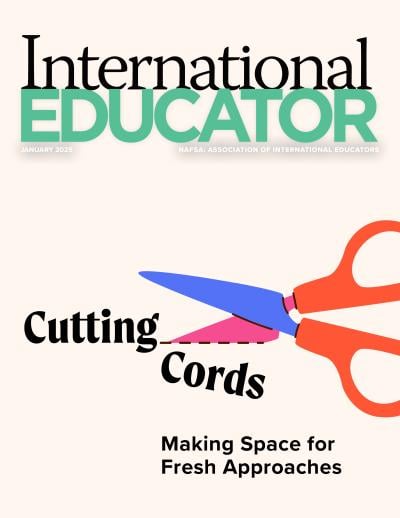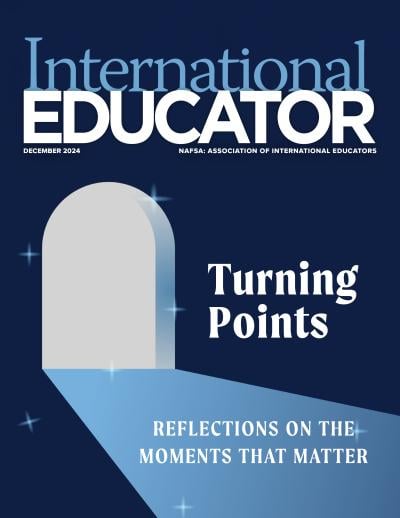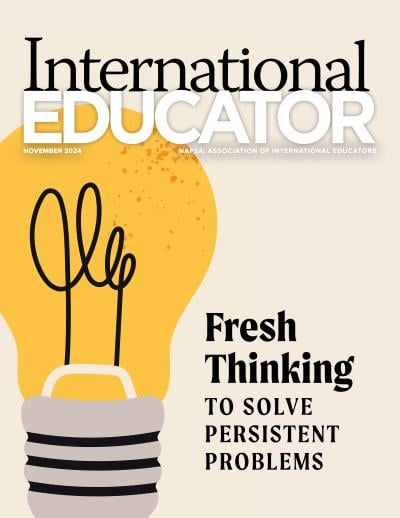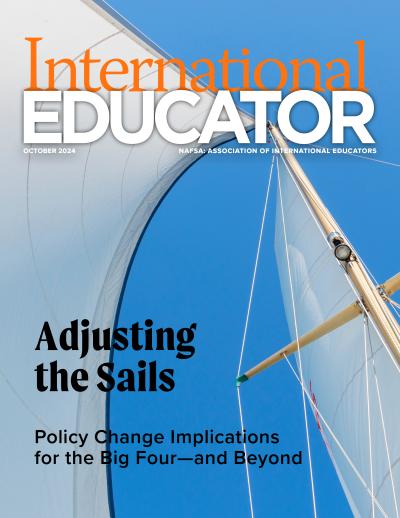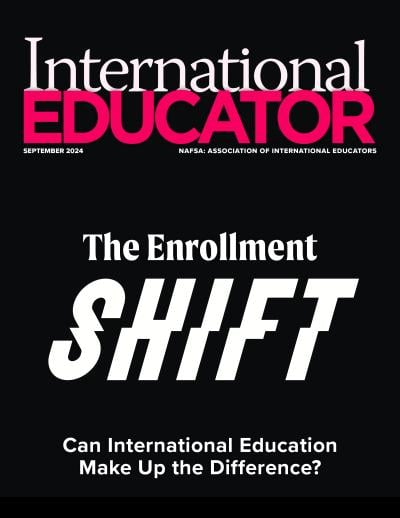From the Margins to the Center

Are you feeling frustrated, disillusioned, or powerless with the current state of the world? If so, you are certainly not alone. But two recent experiences give me hope and make me believe that we as international educators may actually be able to play a part in turning the tides.
In October, I attended two conferences in one week, one of which was the NAFSA Region IV Conference in Duluth, Minnesota. As I reflected on the week, I came to a powerful realization: We are in the midst of a shift—as a society, but also within higher education—when it comes to the role of intercultural learning. While intercultural competence was once seen as a “nice to have” skill, trends in society are now forcing individuals and organizations to recognize that such capacities are more critical and to begin doing something about it.
Let me offer some context. In the early 2000s, I was working as an international student adviser and I began to recognize that international education professionals needed to do more to help students—as well as faculty, staff, and others in the community—make the most of the intercultural learning opportunities right in front of them. In 2006, I began a PhD program to explore how to better foster intercultural learning. At the time, the idea of intentionally designing and facilitating such experiences to help people develop their intercultural competence (rather than assume it was an automatic outcome of such experiences) was relatively new.
In 2013, I joined the Council on International Educational Exchange (CIEE) in a newly created role as academic director of intercultural learning. I was responsible for developing intercultural curriculum for CIEE’s study abroad programs and training resident staff around the world on how to facilitate intercultural learning. At the time, there were very few organizations with positions that included the word “intercultural” in the title or concentrated primarily on intercultural learning.
Moving to the present day. At the 2018 NAFSA Region IV Conference, I not only met a number of people working in the field of international education who have intercultural learning as a core part of their job description, but I was also amazed by the number of presentations that centered on intercultural learning. There are now several flagship institutions, such as the University of Minnesota-Twin Cities and Purdue University, that have not one, but multiple people—even entire departments—focused on intercultural learning. I was equally impressed to see that many smaller institutions, such as the University of Minnesota-Duluth, are investing in helping faculty internationalize their curricula. Several faculty members from various disciplines attended the conference to share the work they are doing to create more inclusive classrooms and advance intercultural learning.
That same week, I attended the Intercultural Development Inventory (IDI) Conference, which brings together people who utilize the IDI, one of the most effective tools for assessing and developing intercultural competence at the individual, group, and organizational levels. The focus of the conference is not just on the instrument, but on how to foster intercultural competence in a developmental way. Taking a developmental approach to intercultural competence means recognizing that people experience cultural differences at varying levels of complexity. It also means meeting learners where they are in order to effectively nurture their growth—instead of using a one-size-fits-all method.
Participants at the IDI Conference came from a wide range of organizations, including corporations, nongovernmental organizations, faith-based organizations, and education organizations and institutions. When we were asked by a show of hands for the sector or field in which we worked, about half of the 300 attendees indicated they work in education. This is fantastic, in my opinion, because it means more educational institutions, and organizations in general, are not only increasing their attention on intercultural learning, but doing so from a developmental perspective.
I realized that the polarizing rhetoric that is so prevalent in society today—coupled with movements such as Black Lives Matter and #MeToo, which are bringing to light negative treatment of certain populations—are actually sparking increased awareness and fueling a drive to do more to develop intercultural competence.
At the IDI Conference, we also discussed the fact that advocacy and development work are different, yet complementary. Advocacy is about disturbing the status quo, exposing inequities, and raising awareness. Intercultural development is about meeting people where they are, in a nonjudgmental way, and helping them to overcome their developmental challenges and move along the intercultural development continuum.
Recent social movements, along with increasing advocacy and activism, have done a good job of bringing societal inequities to the forefront. This has highlighted a need and opened a lane for intercultural development work. What’s happening in our society is actually moving intercultural development work from the margins toward the center.
It would be apt here to consider a saying I often hear in business: “What got you here, won’t get you there.” Advocacy and activism have brought about a new level of awareness, but to move individuals beyond simple awareness—and society out of polarization—toward a deeper level of understanding and empathy requires a developmental approach.
Building on the momentum of this growing awareness in a way that fosters intercultural development will not necessarily be easy. However, as one of the speakers at the IDI Conference said, “This work may be hard, but it doesn’t have to be heavy.” By establishing a community of educators who are interested in and understand how to effectively enrich intercultural learning—for ourselves, our colleagues, and our students—we can move things forward together. If you are reading this, you are a part of this community.
Intercultural competence is no longer a “nice to have” skill in our world, but a “need to have,” and that means educational institutions need to get serious about fostering it. Thankfully, the shift is already beginning to happen. Let’s not squander the opportunity laid before us by countering polarizing statements with more polarizing statements. Instead, let’s focus on doing the difficult, but rewarding, developmental work that can truly lead to a more interculturally competent world.
Additional Resources
About International Educator
International Educator is NAFSA’s flagship publication and has been published continually since 1990. As a record of the association and the field of international education, IE includes articles on a variety of topics, trends, and issues facing NAFSA members and their work.
From in-depth features to interviews with thought leaders and columns tailored to NAFSA’s knowledge communities, IE provides must-read context and analysis to those working around the globe to advance international education and exchange.
About NAFSA
NAFSA: Association of International Educators is the world's largest nonprofit association dedicated to international education and exchange. NAFSA serves the needs of more than 10,000 members and international educators worldwide at more than 3,500 institutions, in over 150 countries.
NAFSA membership provides you with unmatched access to best-in-class programs, critical updates, and resources to professionalize your practice. Members gain unrivaled opportunities to partner with experienced international education leaders.







